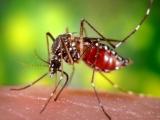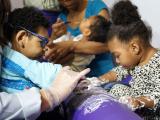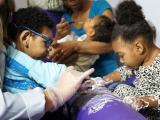Areas of the United States that have seen local transmission of the Zika virus saw a 21% increase in birth defects possibly linked to Zika in the last half of 2016. That's the takeaway from new data published in Morbidity and Mortality Weekly Report (MMWR) by the Centers for Disease Control and Prevention (CDC).
The researchers said it's not known at this time if the increase is due to local spread of the flavivirus or other compounding factors.
Three of 1,000 babies had birth defect
The CDC looked at nearly 1 million births in 2016 in 15 US states and territories: Florida (select southern counties), Georgia (select metro-Atlanta counties), Hawaii, Iowa, Illinois, Massachusetts, New Jersey, New York (excluding New York City), North Carolina (select regions), Puerto Rico, Rhode Island, South Carolina, Texas (select regions), Utah, and Vermont. Some of those regions (Florida, Texas, and Puerto Rico) had documented evidence of locally transmitted Zika virus beginning in the summer of 2016.
The researchers found that about 3 out of every 1,000 babies born in 15 states and territories in 2016 had a birth defect possibly associated with Zika virus infection in the mother. Of those babies, almost half (49%) had brain abnormalities, including microcephaly (small head size), 20% had neural tube defects, 9% had eye abnormalities, and 22% exhibited nervous system damage.
The prevalence of reported birth defects potentially linked to Zika virus infection increased in areas with confirmed local transmission, from 2.8 per 1,000 live births (182 cases) during the first half of 2016 to 3.0 per 1,000 live births (211 cases) during the second half, representing a 21% jump.
The CDC noted that only a small percentage of birth defects possibly related to Zika had lab-confirmed evidence; most were not tested. "This finding underscores the importance of surveillance for birth defects potentially related to Zika virus infection and the need for continued monitoring in areas at risk for Zika transmission and exposure," the study authors concluded.
More Zika-affected birth data expected
This is the first study to calculate the prevalence of defects possibly related to Zika infection. Though the CDC follows laboratory-confirmed Zika pregnancies in a national registry, this population-based study attempts to capture all births that may have been exposed to the virus.
"The significant increase in birth defects strongly linked to Zika virus infection is concerning, but it might represent just a portion of the full effect of congenital Zika virus infection," said CDC Director Barbara Fitzgerald, MD, along with two of her colleagues, in a commentary published today in the Journal of the American Medical Association (JAMA).
The full effect can be hard to determine for several reasons: Many pregnant women don't know if they've been infected, women exposed in the last half of 2016 did not give birth until 2017, and, in some cases, congenital Zika defects are not seen in a baby or child immediately after birth.
The CDC said it's likely that there will be another increase in these numbers when 2017 data are analyzed.
See also:
Jan 25 MMWR study
Jan 25 JAMA commentary





















